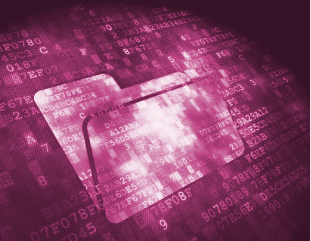 In spite of the hype surrounding the cloud, the on-premise model in which customers run their own SAP software is still the norm. However, that doesn’t rule out a service provider handling part of the operations; indeed, hosting is a widely used model, particularly among SMEs. While the roles at hand are usually clearly assigned in a hosting model like this, the same unfortunately doesn’t always apply to SAP system security.
In spite of the hype surrounding the cloud, the on-premise model in which customers run their own SAP software is still the norm. However, that doesn’t rule out a service provider handling part of the operations; indeed, hosting is a widely used model, particularly among SMEs. While the roles at hand are usually clearly assigned in a hosting model like this, the same unfortunately doesn’t always apply to SAP system security.
Cyber Attack
10KBlaze and SAP Security II: Hype & Scaremongering
 (Partner blog post of SERPENTEQ GmbH)
(Partner blog post of SERPENTEQ GmbH)
On April 19, 2019, at the OPCDE Cyber Security conference in Dubai, security researchers Dmitry Chastuhin and Mathieu Geli gave a presentation called “SAP gateway to Heaven”. They re-visited two configuration issues (related to SAP Gateway and SAP Message Server) that have been known for many years and for which detailed security guidelines have been available for years. Now the researchers applied some admirably creative thinking to combine them.
10KBLAZE and SAP Security I: All Quiet on the Western Front
 Since May 2, 2019, the market for SAP security has known only one topic: the 10KBLAZE exploit toolkit, which has even prompted a warning from the U.S. Department of Homeland Security. Upon closer examination, however, it quickly becomes apparent that there’s not much news to report.
Since May 2, 2019, the market for SAP security has known only one topic: the 10KBLAZE exploit toolkit, which has even prompted a warning from the U.S. Department of Homeland Security. Upon closer examination, however, it quickly becomes apparent that there’s not much news to report.
Are you really that attached to your ABAP security flaws, or is it time to say goodbye?
 Almost all companies fine-tune their SAP systems with custom developments, but in doing so, they often expose themselves to severe security flaws. In particular, forgotten code that was only needed for a short time or has since been rendered obsolete by SAP’s own enhancements presents a further avenue for attacks.
Almost all companies fine-tune their SAP systems with custom developments, but in doing so, they often expose themselves to severe security flaws. In particular, forgotten code that was only needed for a short time or has since been rendered obsolete by SAP’s own enhancements presents a further avenue for attacks.
AKQUINET’s analyses show that up to 90% of ABAP code is no longer used. Frequently written for one-time situations and neglected ever since, such programming offers an ideal back door for hacking and other forms of manipulation.
Audit or Penetration testing? Find your vulnerabilities before you get hurt!
 To answer the question of which Security & Compliance check is right for you, we must first remember that the term “vulnerabilities” can refer to very different levels of your system landscape and thus refer to a number of attack vectors.
To answer the question of which Security & Compliance check is right for you, we must first remember that the term “vulnerabilities” can refer to very different levels of your system landscape and thus refer to a number of attack vectors.
This ranges from system-side levels (e.g. operating system and network security) to the underlying database including the current parameterization of your SAP systems down to the authorizations required for operations and applications, including any SoD conflicts.
So, the first question is – how sure are you that you know where your vulnerabilities are? Continue reading
General Data Protection Regulation – is your protection in place?
 The EU General Data Protection Regulation (EU GDPR) takes effect on May 25, 2018, and hardly a day goes by without some news about it – and that’s the way it should be! As demonstrated by a DSAG member survey of SAP users just a few weeks ago, only just over half of all the companies (53%) have a roadmap. To say nothing of full implementation of the new requirements.
The EU General Data Protection Regulation (EU GDPR) takes effect on May 25, 2018, and hardly a day goes by without some news about it – and that’s the way it should be! As demonstrated by a DSAG member survey of SAP users just a few weeks ago, only just over half of all the companies (53%) have a roadmap. To say nothing of full implementation of the new requirements.
Michael Muellner, Head of Security & Compliance at AKQUINET, discusses helps to make this topic accessible to you by building a bridge from the statutory requirements to steps in operations and concrete tips.
Is WannaCry possible for SAP systems?

Last year, WannaCry brought some companies to the edge of absolute ruin. While the most common entry vectors are known, companies are still making it much too easy for hackers.
Officially, emails were to blame for the largest-scale cyberattack in recent years. If users clicked on the mail attachment, WannaCry implanted malware into the computers, propagated itself, and encrypted accessible data in the blink of an eye. In an alternative scenario, hackers had infiltrated the manufacturer of a subsystem and built the malware code into a software patch.
While unfamiliar emails can simply be deleted, the deployment of such a patch can undermine the in-house security system with breathtaking speed.
Favored target for cyber attacks: SAP archive systems.

Checklist to secure your SAP systems.
Do you know at any time who accesses the sensitive data of your SAP archive servers? In our penetration tests we experiencing it again and again: attacks on SAP archive systems are mostly successful, not recognized and therefore not logged and reported.

